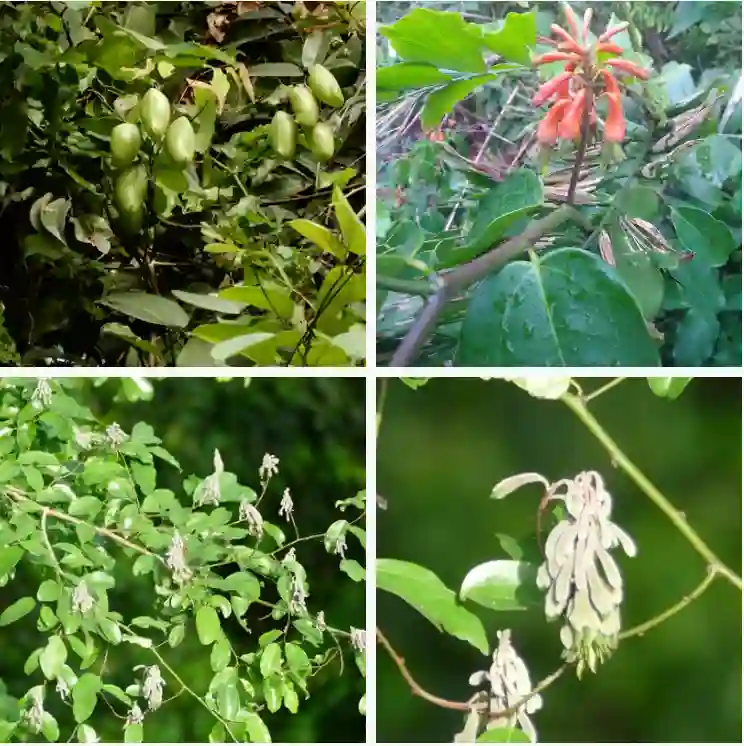Nepenthes Platychila: A Pitcher Plant with Dramatic Style
Hello, carnivorous plant enthusiasts! I’m Ferb Vu, and today we’re diving deep into the fascinating world of the Nepenthes Platychila. This Bornean beauty isn’t your average pitcher plant. It boasts unique features that make it a real head-turner in any collection.
Plant Family: Nepenthaceae – 207 Species in Genus Nepenthes
What is a Nepenthes Platychila?
The Nepenthes Platychila is a tropical pitcher plant endemic to the Hose Mountains of central Sarawak. This carnivorous wonder belongs to the loosely defined Nepenthes Villosa complex, known for their spectacular pitcher transformations.
What Makes the Nepenthes Platychila Special?
The true star of the show with this plant is the dramatic transformation between its lower and upper pitchers.
- Lower Pitchers: These are cylindrical and beautifully striped. They function primarily to capture prey, like insects, for the plant to consume.
- Upper Pitchers: Here’s where the magic happens. Upper pitchers morph into stunning funnel shapes with a wildly flared, flat peristome (the rim around the pitcher opening). This peristome is so wide and eye-catching, it becomes the defining characteristic of the Nepenthes Platychila. The pitcher body itself is often adorned with attractive speckles, adding another layer of visual interest.
This dramatic shift in pitcher form makes the Nepenthes Platychila a truly captivating plant to observe.
Nepenthes Platychila vs. Nepenthes Veitchii
Nepenthes enthusiasts often compare the Nepenthes Platychila to its close relative, the Nepenthes Veitchii. Both are stunning plants with unique characteristics:
- Nepenthes Platychila: Known for its spectacular flared peristome and spotted upper pitchers. Generally considered an easier grower compared to Nepenthes Veitchii.
- Nepenthes Veitchii: Showcases an elongated, tubular pitcher with a ribbed peristome. Can be more challenging to cultivate, requiring specific humidity and temperature ranges.
Nepenthes Platychila vs. Hybrids: The Best of Both Worlds?
Hybrids involving the Nepenthes Platychila are becoming increasingly popular. Breeders often cross it with the Nepenthes Veitchii to create stunning offspring that combine the best features of both parents.
These hybrids can offer:
- Larger pitchers: The Nepenthes Veitchii contributes size and dramatic coloration to the offspring.
- Robustness: Hybrids often inherit a more vigorous growth habit from the Nepenthes Veitchii.
- Striking Peristome: The signature flared peristome of the Nepenthes Platychila remains a prominent feature in many hybrids.
How to care for Nepenthes Platychila?
The Nepenthes Platychila thrives in intermediate conditions, making it a good choice for growers with some experience. Here are some key points to remember:
- Light: Provide bright, indirect light. Avoid harsh sunlight, which can scorch the leaves.
- Temperature: Aim for a range of 68-86°F (20-30°C) during the day and slightly cooler nights.
- Humidity: High humidity is crucial. Consider using a humidifier or placing the plant on a pebble tray filled with water.
- Watering: Use only distilled or rainwater to avoid mineral build-up. Water deeply when the potting media approaches dryness.
- Feeding: While the plant obtains nutrients from its captured prey, occasional feeding with diluted orchid fertilizer can be beneficial.
Where to Find Your Nepenthes Platychila?
Finding reputable carnivorous plant nurseries or online vendors is essential. Look for established sellers who specialize in Nepenthes and can provide healthy, established plants.
The Final Scoop: Is the Nepenthes Platychila Right for You?
The Nepenthes Platychila is a captivating plant with unique beauty and a fascinating pitcher transformation. If you’re an intermediate grower with the ability to provide the right conditions, this plant can be a rewarding addition to your collection. Just remember, with its specific needs, it’s not quite suitable for complete beginners. But for those willing to put in the effort, the Nepenthes Platychila will surely reward you with its dramatic style and captivating presence.
If i die, water my plants!



